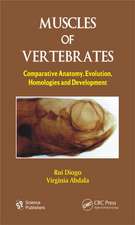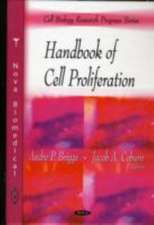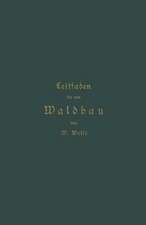Practical Computing for Biologists
Autor Steven H. D. Haddock, Casey W. Dunnen Limba Engleză Paperback – 5 noi 2010
Preț: 698.20 lei
Preț vechi: 884.47 lei
-21% Nou
Puncte Express: 1047
Preț estimativ în valută:
133.60€ • 139.49$ • 110.57£
133.60€ • 139.49$ • 110.57£
Carte disponibilă
Livrare economică 03-10 martie
Livrare express 28 februarie-06 martie pentru 163.30 lei
Preluare comenzi: 021 569.72.76
Specificații
ISBN-13: 9780878933914
ISBN-10: 0878933913
Pagini: 564
Dimensiuni: 230 x 193 x 26 mm
Greutate: 1.2 kg
Editura: Oxford University Press
Colecția OUP USA
Locul publicării:New York, United States
ISBN-10: 0878933913
Pagini: 564
Dimensiuni: 230 x 193 x 26 mm
Greutate: 1.2 kg
Editura: Oxford University Press
Colecția OUP USA
Locul publicării:New York, United States
Recenzii
Practical Computing for Biologists is a clear guide to methods that unlock the power of the personal computer. Although the breadth of subjects covered is certainly an asset of this volume, what really makes the book stand out is how well the authors clearly describe each technique and its applicability to biological sciences. It is a great launching point for any necessary further investigation of computational techniques.
The book covers a wide range of subjects that truly justifies the title of 'practical computing.' In addition to the usual programming-related topics, it also includes a thorough introduction to the programming environment, approaches to combining different programs together, a description of the basic text manipulation tools such as regular expressions, and even an introduction to dealing with digital art and images. As such the book is great value for the money, being at least three books in one.
My copy of Practical Computing for Biologists arrived last week, and I've been very impressed. It is a well-written, well-paced guide to basic computing skills for scientists and engineers of all stripes (not just biologists). It is beautifully produced: full-color printing and great graphical design make this book a joy to read. If I ever do turn Software Carpentry into a book, I might skip the topics PCB covers and just tell people to go and buy it.
When considering my research and use of time, this book has been the most important book I've read in the last year, and perhaps the last decade. Striking a perfect balance by guiding you through tutorials and nudging your own self-exploration, the book has just enough guided direction to not annoy or overwhelm. It has helped (and is still helping) me to do what I was doing before, but more efficiently.
The book covers a wide range of subjects that truly justifies the title of 'practical computing.' In addition to the usual programming-related topics, it also includes a thorough introduction to the programming environment, approaches to combining different programs together, a description of the basic text manipulation tools such as regular expressions, and even an introduction to dealing with digital art and images. As such the book is great value for the money, being at least three books in one.
My copy of Practical Computing for Biologists arrived last week, and I've been very impressed. It is a well-written, well-paced guide to basic computing skills for scientists and engineers of all stripes (not just biologists). It is beautifully produced: full-color printing and great graphical design make this book a joy to read. If I ever do turn Software Carpentry into a book, I might skip the topics PCB covers and just tell people to go and buy it.
When considering my research and use of time, this book has been the most important book I've read in the last year, and perhaps the last decade. Striking a perfect balance by guiding you through tutorials and nudging your own self-exploration, the book has just enough guided direction to not annoy or overwhelm. It has helped (and is still helping) me to do what I was doing before, but more efficiently.
Notă biografică
Steven H.D. Haddock is a Research Scientist at the Monterey Bay Aquarium Research Institute and adjunct Associate Professor at the University of California, Santa Cruz, studying bioluminescence and biodiversity of gelatinous zooplankton. He started programming in BASIC on an Apple ][ and began his undergraduate studies in engineering before deciding to change fields. He took this programming background with him to his graduate studies in Marine Biology, where he quickly realized the advantages that computing skills offered and felt compelled to help foster these abilities in others. He has developed many utilities and devices for research, including instruments to monitor bioluminescence from fireflies, a freezer monitoring system, a web-based conference registration database, and a PCR calculator for smartphones.Casey W. Dunn, a Professor at Yale University, does research that has a large computational component but always in conjunction with work in the field and lab. His first interest in computers stemmed from building electronics, and he further developed his computational skills working in Silicon Valley while an undergraduate. As his data sets grew larger and larger during grad school and his postdoc, he found himself reaching back to his computer background more often. In the course of his own research and helping other biologists with their computational challenges, he became concerned about the mismatch between training opportunities and the real day-to-day computational problems biologists face.


























